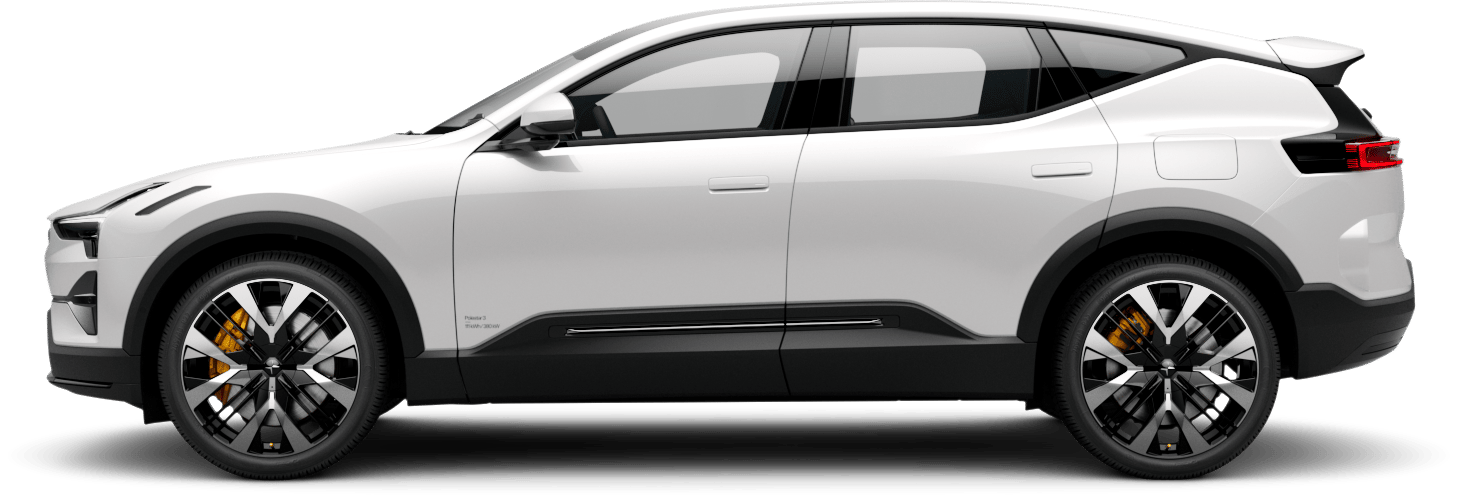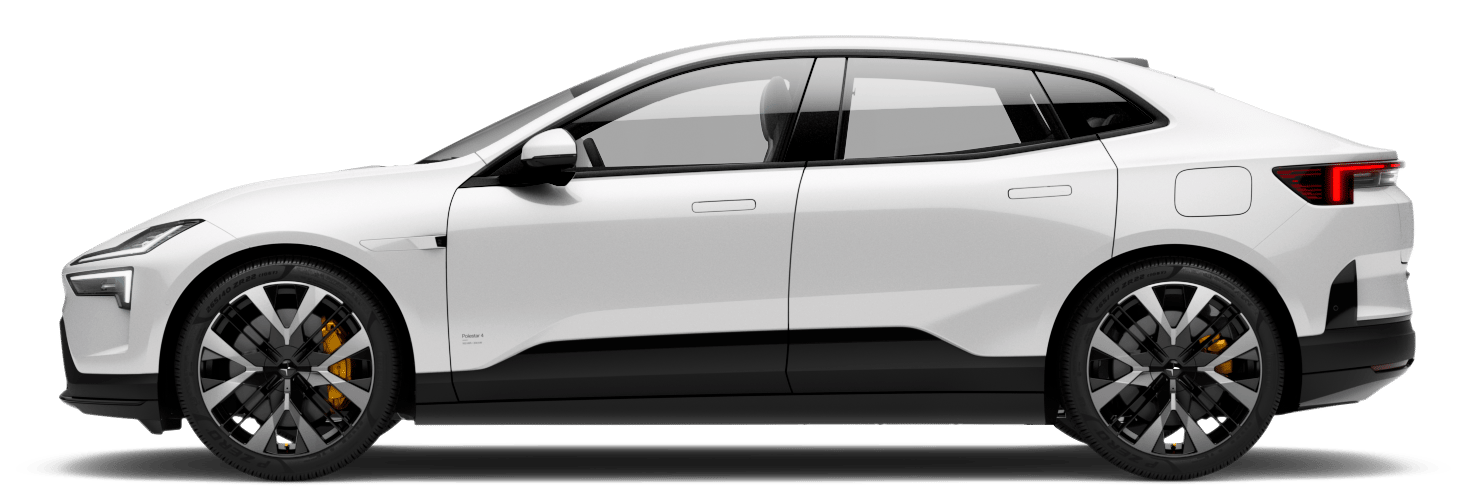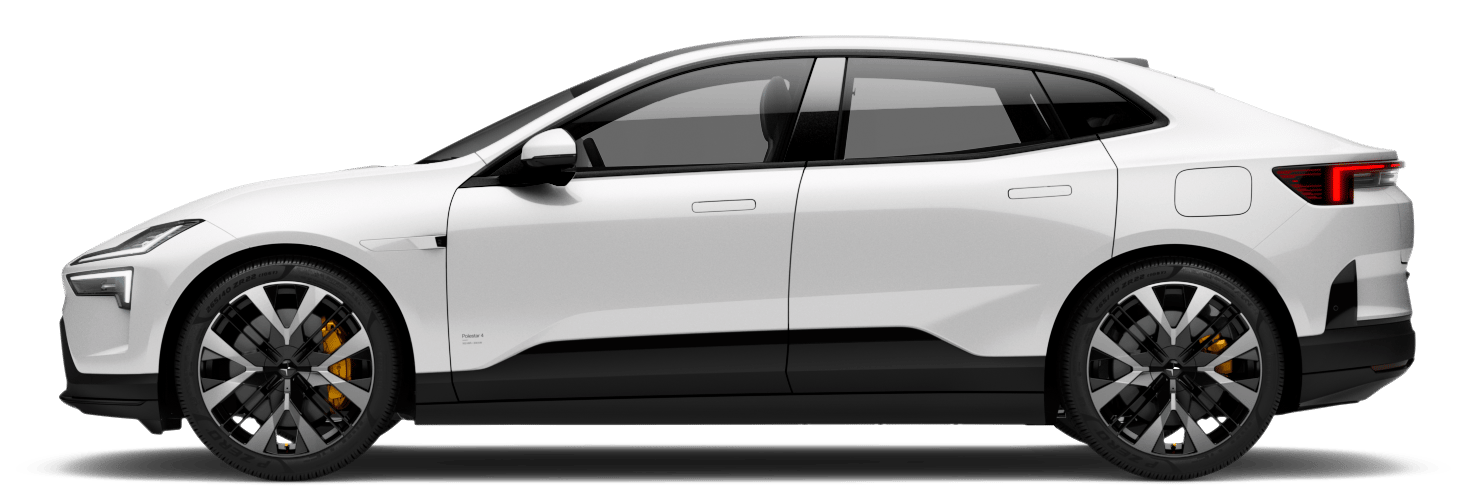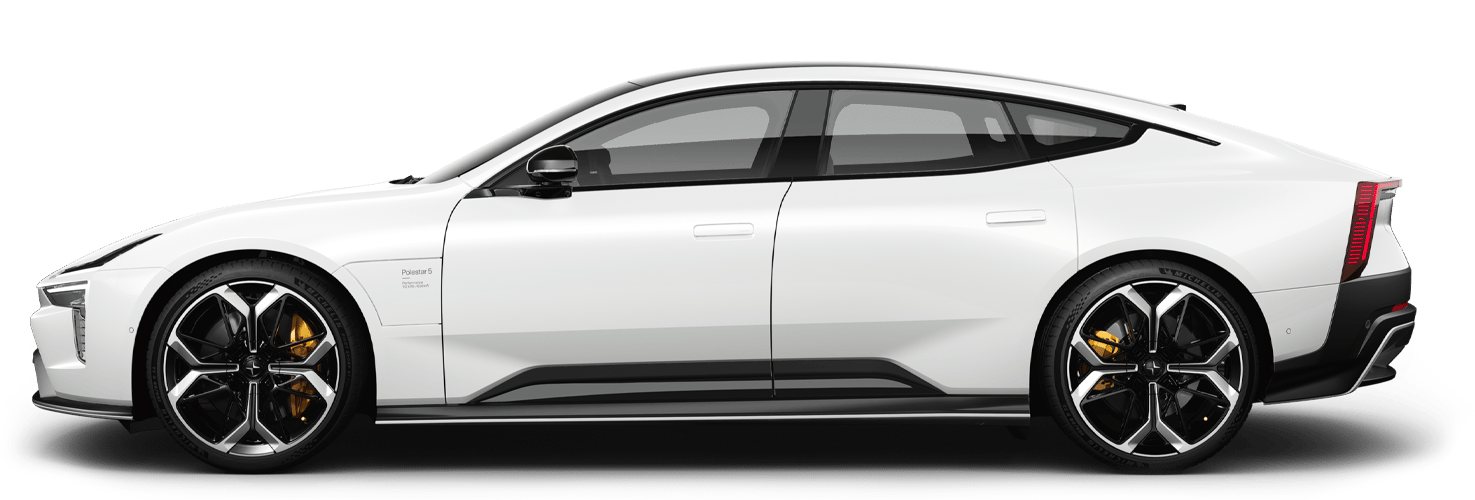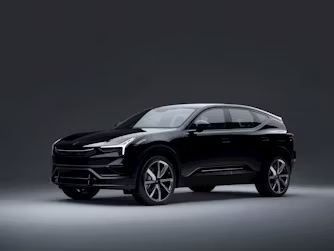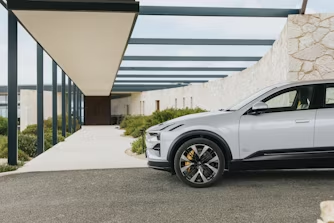Polestar and Bcomp: the making of our signature interior weave
The car industry is undergoing seismic shifts. Powertrains, autonomous driving, and infotainment systems are completely transforming our understanding of mobility. Not to be outdone interior designers and fabric manufactures are making their own innovations - racing to find materials that are sustainable while still retaining an exclusive feel. And in the middle of the Swiss Alps, we think we've found just that.
In the heart of Fribourg, Switzerland, a quiet revolution was underway. Bcomp, a company founded in 2011, was developing flax fibres as reinforcement fabrics that seemed poised to redefine luxury and design sustainably. Initially making waves in skiing, where their flax fabrics enhanced performance and provided superior vibration damping, Bcomp's journey took an unexpected turn when Polestar sought a partnership.
The magic lay in Bcomp's materials – ampliTex™ and powerRibs™. The former, made from woven flax fibers, not only reduced vibrations and overall weight but also added a visually pleasing layer. The latter, inspired by the vein structures of leaves, formed a 3D structure on panels, drastically increasing strength and stiffness while reducing weight.
"When we first saw the material, we knew that this technology perfectly aligns with Polestar's goals," recalls Ross Kelk, Head of Interiors R&D and Industrial Program Leader of Polestar's British development team. "Our companies shared the same goals, values, and a common mindset from the beginning."
Initially, however, it was not clear how and where the material could be used. And the visual appearance of the material did not seem to resonate with luxury or performance in the way that we wanted in our Polestar vehicles. "Together with the design department we experimented, played, tried different things," Ross remembers. This experimental approach applied not only to the material but the entire perception of luxury. "Traditionally, manufacturers associate luxury with exclusive materials like leather, veneered wood, and a lot of embellishments. However, we wanted to confidently place the material in the foreground and openly showcase it. Make sustainability a tangible, exclusive experience."
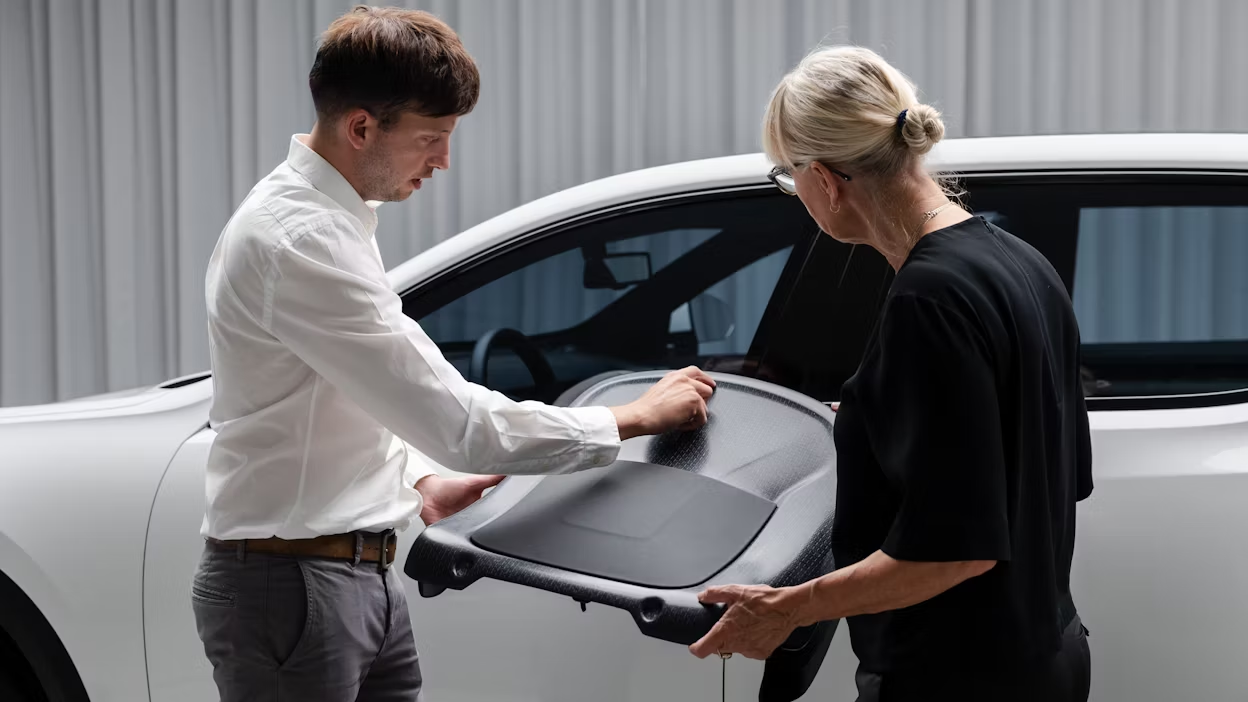
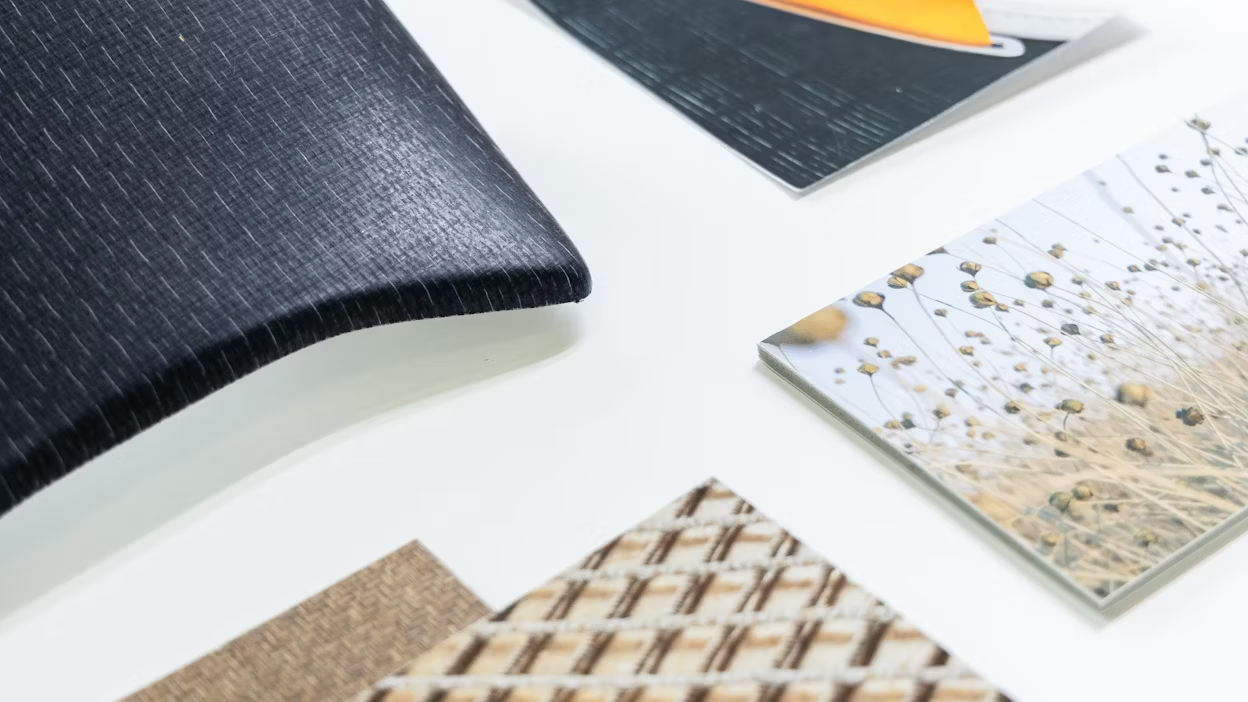
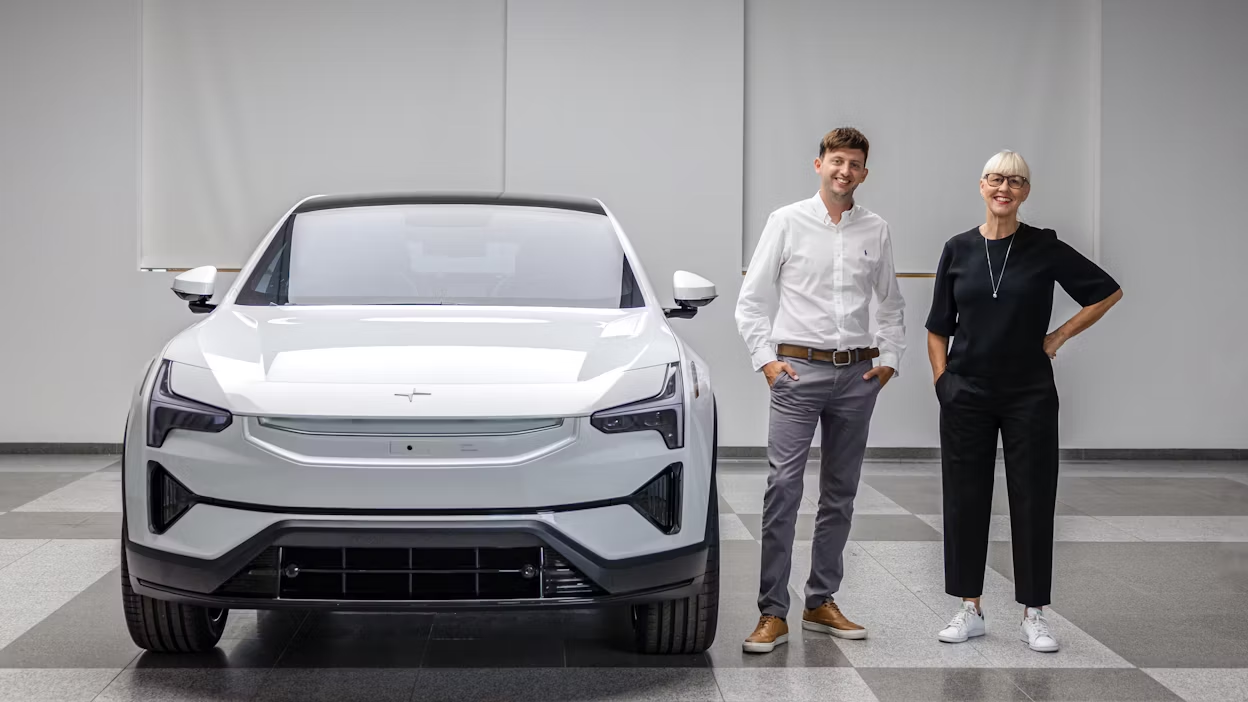
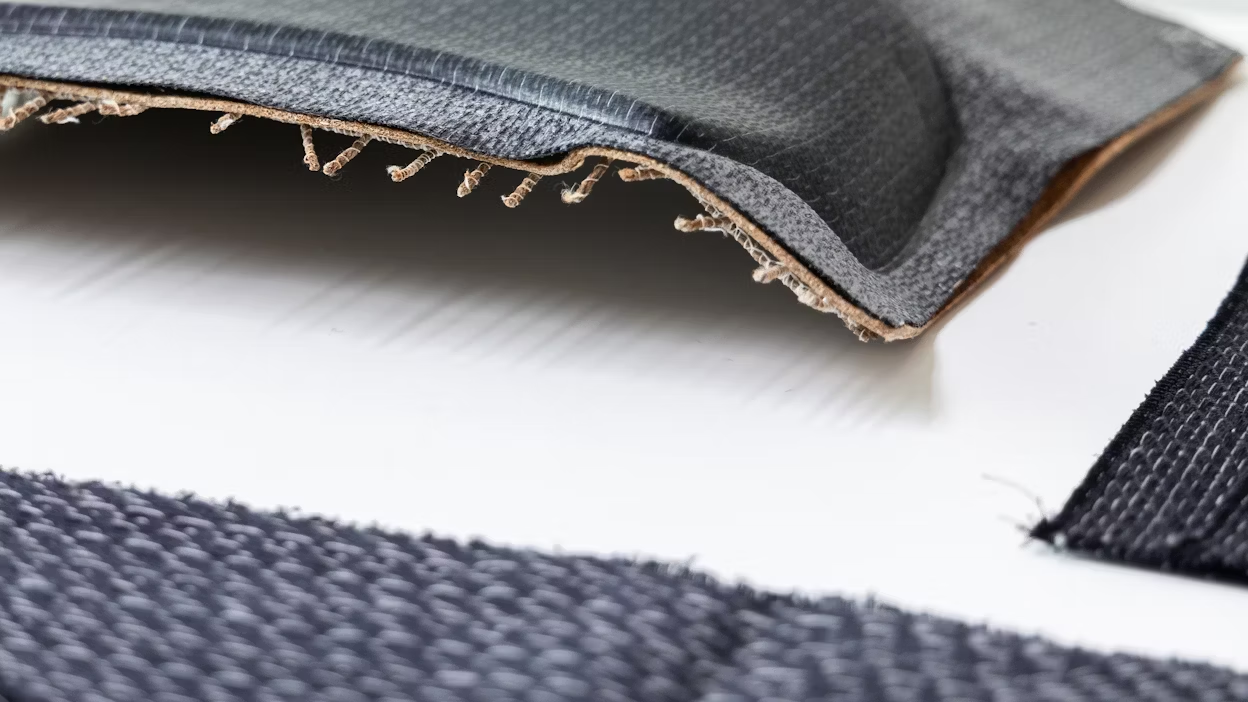




01/04
“The power of a designer is to create desire for the right choice, the choice that points in the right direction,” says Maria Uggla, Head of Colour and Material at Polestar. “All materials have hidden potential to turn into a luxury expression and we help reveal them.”
This approach led to results, as the design team brought about a new aesthetic that makes this fusion of design, minimalism, and sustainability palpable. “There are enormous possibilities in exploring and creating new expressions when working with new sustainable materials,” Maria continues.
The Polestar Signature Weave, a result of extensive collaboration, was born - a flexible yet robust material that found its place in the interior seat shells of the Polestar 3. But it wasn’t straightforward.
A three-year timeline marked the intensive effort to develop Bcomp into a visible surface weave within the car's interior. Challenges were abundant – the material had to perform consistently across extreme conditions; from scorching heat to freezing cold.
The chosen weave design was the result of extensive trials and experimentation. A blend of flex fiber linen textile, natural fiber composite, and powerRibs™, it not only reduced plastic usage but also contributed to weight reduction.
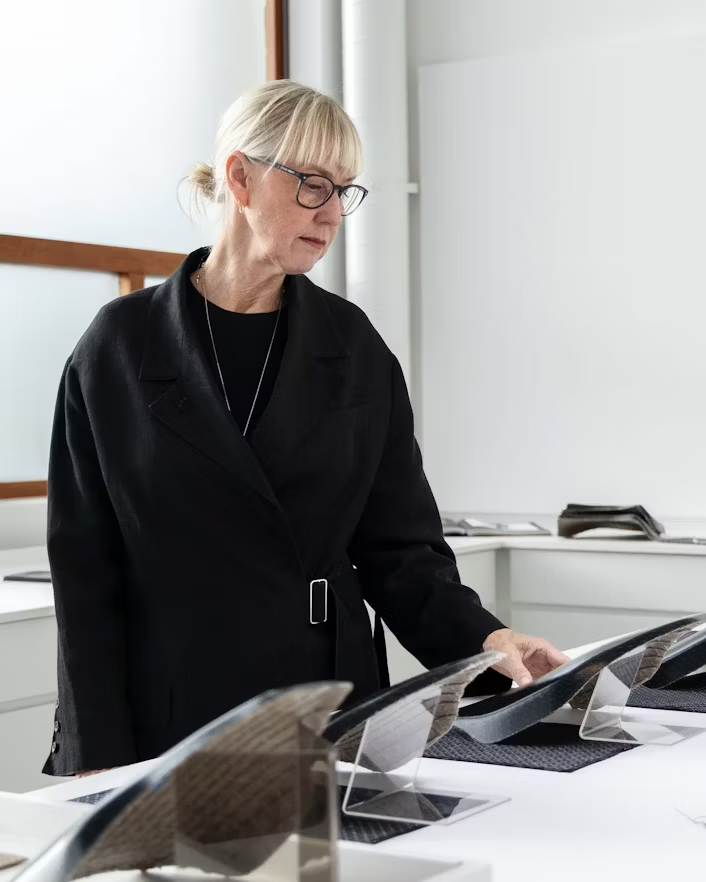
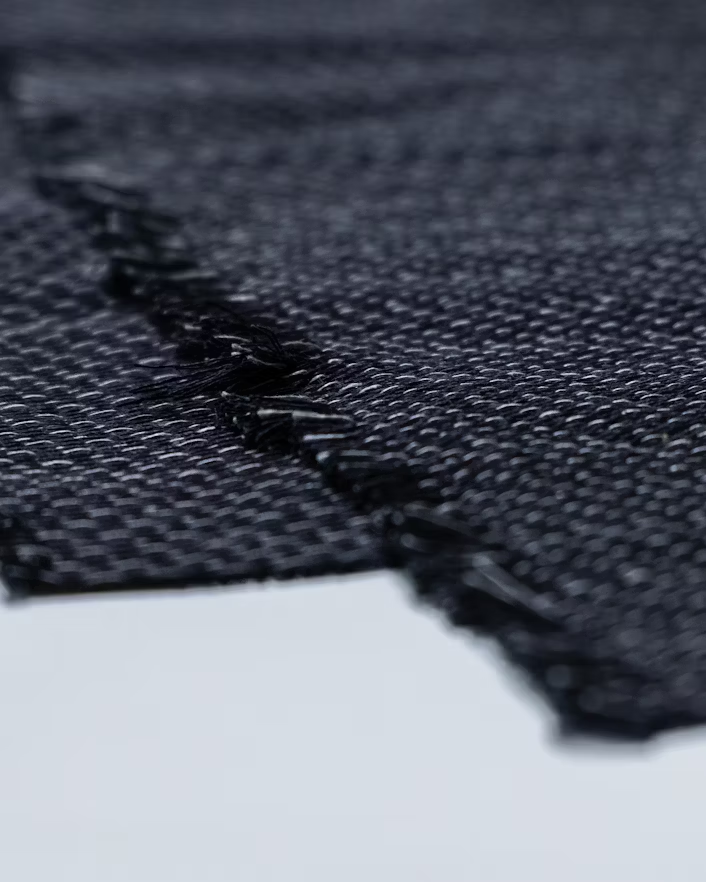
The power of a designer is to create desire for the right choice, the choice that points in the right direction.
“There were many challenges in the development since this is a new way of working for us. It's one thing to see the woven textile, but a completely different thing to see the textile processed into a panel. It took many trials but after reviewing a number of variants, we landed on a specific weave, and it looks awesome. I can't wait to see it in the car,” Maria says.
The optimism about the project's potential impact on the automotive industry was evident. A successful outcome could inspire other OEMs to adopt similar sustainable materials, setting new standards in sustainable innovation.
"For us at Polestar it's important that this is the real deal. It is not cosmetic – it is a sustainable improvement of an interior panel. When we develop new sustainable material solutions, we make sure to use the materials' properties full potential." Maria says.
The Signature Polestar Weave was initially expected to debut in Polestar 5. However, a fast-tracked development process and positive test prototyping results have allowed us to introduce the material far earlier than originally expected. But the journey doesn’t end here. Several new applications are already being tested, performance and sustainability are being optimized, and the idea of a circular economy is gaining more focus.
"Usually, creative work is done when a new technology is introduced into the production process. In our collaboration, it's different: we use insights from the production process for new creative approaches and ideas. We think in generations, so to speak," says Ross.

